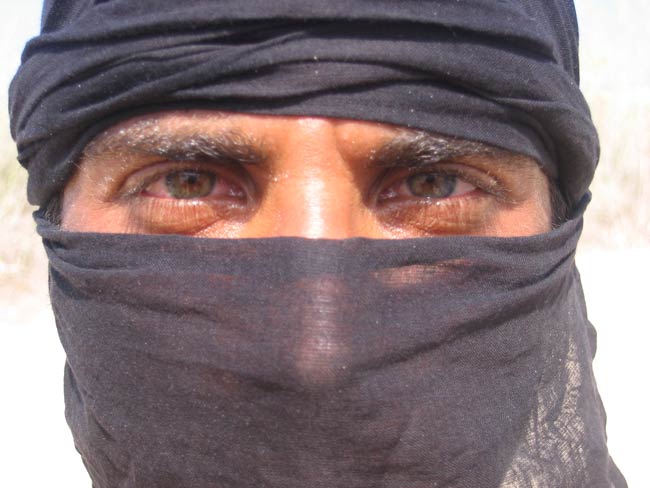A Culture that Capitalism Can't Crush

It often feels like Western culture has poked its sticky fingers into every nook and cranny on Earth, destroying other cultures as traditional people take on Western dress, get hooked on a Western diet and gather 'round to watch American programs on a newly installed TV with satellite hook-up. In fact, many people on Earth have actually retained their cultural ways in spite of the lure (or sometimes the force) of Western culture. There are still people across the globe who hunt and gather, herd animals or tend small garden plots as they always have. More remarkable, others have managed to incorporate some parts of Western culture while holding on to their dearest traditions. Tuareg culture is one of these, and it is now featured in an exhibition, "Art of Being Tuareg: Sahara Nomads in a Modern World," at the National Museum of African Art in Washington, D.C. Nomads The Tuareg were desert nomads. For thousands of years, they crossed the Sahara in caravans of white camels. Swathed in indigo robes with a turban and veil hiding everything but their eyes, the Tuareg were the quintessential masters of the desert. They controlled the trade routes across northern Africa, carrying goods (and people) across borders they didn’t recognize and concocting epic romantic poetry as they rode across the dunes. Today, there are roughly 3 million Tuareg, many of whom have settled down in permanent villages or assimilated into cities. Others still roam the desert herding livestock, but the days of sword-wielding caravans are clearly over. Trucks and airplanes have replaced white camels as ships of the desert. And yet, Tuareg culture perseveres, in language, in social traditions and especially in their handwork. On exhibit at the museum are rooms full of silver metal jewelry worn by women and men. There are leather-fringed and braided saddles, finely etched swords, massive silver amulets for carrying wishes and tea sets with silver sugar shears that cry out to be set out under the stars at an oasis. According to the exhibition text, the Tuareg are interested in beauty, poise and harmony, and these goods are an expression of those values. Who wouldn’t have beauty and poise wearing a necklace strung with jet black beads and a dozen silver triangular pendants? More interesting, not just anybody can make Tuareg finery, which is probably why their artifacts are still authentic. Keen capitalists Tuareg society remains hierarchical; there are aristocrats and underlings, and a third class called inadan who are the craftsmen and women dedicated to manufacturing these objects. Leatherwork and jewelry are not outsourced to anybody but made by the same families who always made them. At the same time, no Tuareg is stuck in the past. Their culture persists because they are also keen capitalists. As the last room of the exhibition demonstrates, Tuareg artisans haven't hesitated to sell bracelets and earrings to tourists, or to market their jewelry on the internet. They have even licensed traditional designs to haute couture purveyor Hermes for a silk scarf. And why not? If you are Tuareg, the global market place is just another caravan trade route across the desert.
Meredith F. Small is an anthropologist at Cornell University. She is also the author of "Our Babies, Ourselves; How Biology and Culture Shape the Way We Parent" (link) and "The Culture of Our Discontent; Beyond the Medical Model of Mental Illness" (link).
- Video: Horse and Rider
- Top 10 Ancient Capitals
- 7 Ancient Wonders of the World
Get the world’s most fascinating discoveries delivered straight to your inbox.


